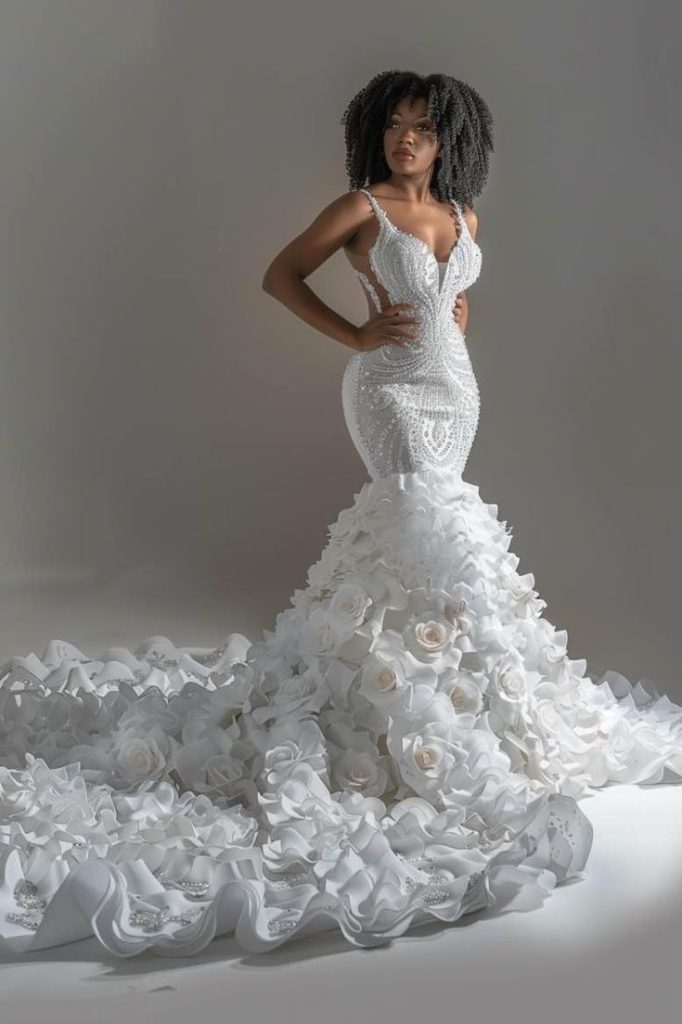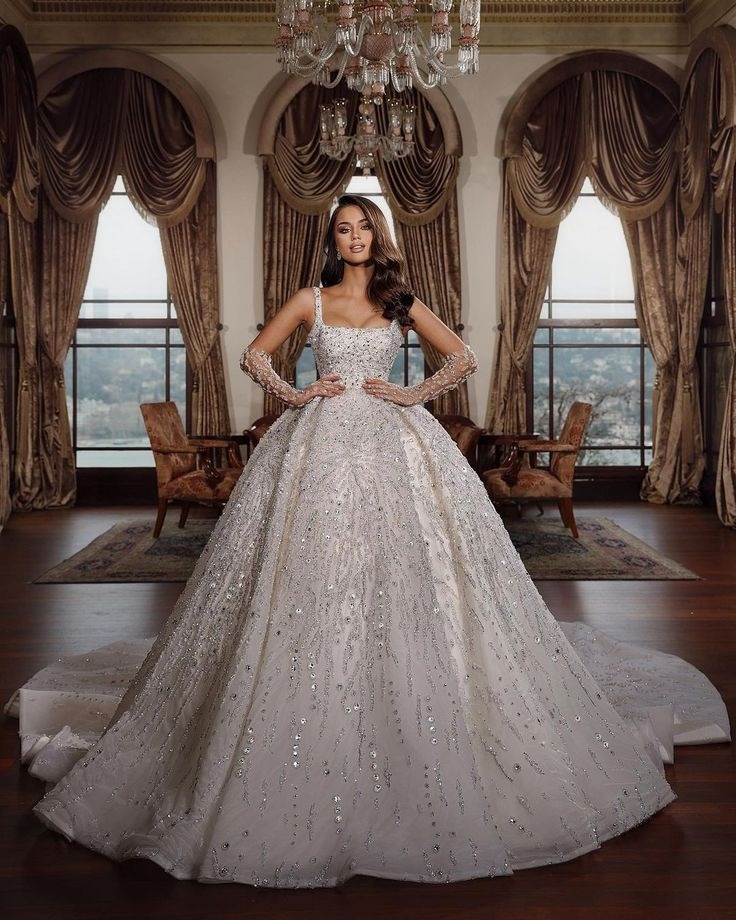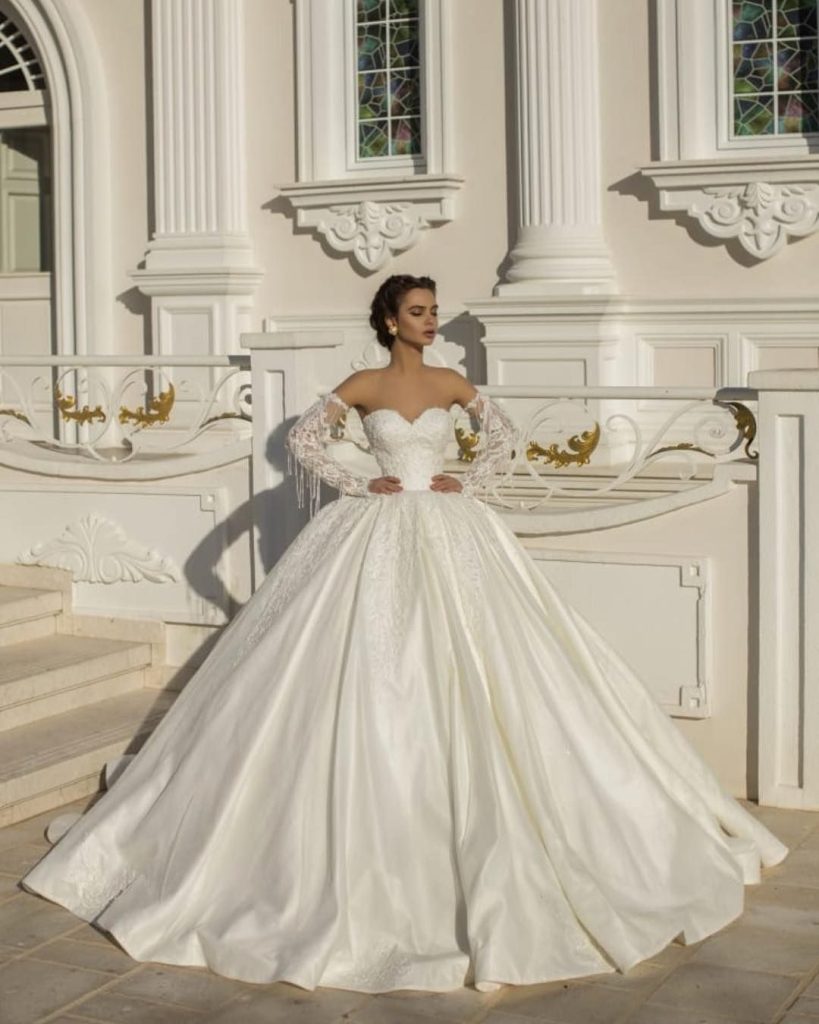
Private Label Custom Made Dresses Whether you’re launching a bridal line, sustainable everyday wear, or luxury evening gowns, private label custom made dresses empower you to control quality, pricing, and narrative. The global private label apparel market is projected to surpass $350 billion by 2028 (Statista, 2025), with dresses comprising 28% of growth. Turkey, Italy, Portugal, and emerging hubs like Vietnam dominate production, offering MOQs as low as 50 pieces and lead times under 6 weeks. This guide positions your brand at the forefront of this revolution.
What Are Private Label Custom Made Dresses? A Deep Dive into Definition and Differentiation
Private label custom made dresses are garments produced exclusively for your brand by a third-party manufacturer, designed from scratch based on your specifications, and sold under your label. Unlike white-label (pre-existing designs rebranded) or OEM (original equipment manufacturing), private label custom made dresses involve:
- 100% Original Designs: Your sketches, tech packs, or mood boards dictate silhouette, neckline, hem length, and embellishments.
- Brand-Specific Fabrics: Exclusive dye lots, custom prints, or sustainable materials like Tencel™ or recycled silk.
- Custom Fit Blocks: Size grading tailored to your target demographic (petite, plus-size, maternity).
- Branded Details: Internal labels, hang tags, embroidery, and packaging reflecting your identity.
The distinction matters. A 2025 McKinsey report reveals that 73% of Gen Z consumers prefer brands with “authentically unique” products—private label custom made dresses deliver exactly that. For example, Elara Couture, a Los Angeles-based online retailer, launched private label custom made dresses in organic cotton poplin with hand-painted floral prints. Within 6 months, their AUR (average unit retail) increased 42%, and return rates dropped to 3.1% due to superior fit.
Private Label vs. White Label vs. Custom Made: A Comparison Table
| Aspect | Private Label Custom Made Dresses | White Label Dresses | Off-the-Rack Wholesale |
|---|---|---|---|
| Design Ownership | 100% Yours | Manufacturer’s | Generic |
| MOQ | 50–300 pieces | 1–10 pieces | 500+ pieces |
| Branding Control | Full (labels, packaging) | Limited | None |
| Profit Margin | 55–75% | 30–45% | 20–35% |
| Lead Time | 6–10 weeks | 1–3 weeks | Immediate |
| Exclusivity | Guaranteed | Shared | Mass-market |
This framework positions private label custom made dresses as the gold standard for serious brands.
Why Choose Private Label Custom Made Dresses? 12 Core Benefits Backed by Data
The decision to invest in private label custom made dresses isn’t just aesthetic—it’s strategic. Here’s why industry leaders are making the switch:
- Brand Authority (92% consumer trust boost) – Deloitte 2025
- Higher Margins (up to 300% markup) – Fashion Institute of Technology
- Inventory Control – Produce based on pre-orders, reducing dead stock by 68%
- Sustainability Storytelling – 81% of millennials pay more for eco-transparent brands
- Size Inclusivity – Custom grading eliminates fit complaints
- Seasonal Agility – Launch micro-collections every 4 weeks
- IP Protection – Designs can’t be replicated by competitors
- Customer Lifetime Value – 40% higher retention with personalized fits
- Social Proof – User-generated content skyrockets with unique pieces
- Wholesale Opportunities – Sell to boutiques under your label
- Direct-to-Consumer Scaling – Shopify data shows 3.2x conversion on exclusive drops
- Exit Strategy – Private label brands fetch 4–6x EBITDA multiples
Case in point: LuxeThread Collective transitioned from wholesale to private label custom made dresses in Portuguese silk. Their Valentine’s Day capsule of 200 units sold out in 72 hours at $289 retail (COGS: $68), yielding a 76% margin.
The Step-by-Step Process of Creating Private Label Custom Made Dresses
Mastering the production pipeline is crucial. Here’s the end-to-end workflow for private label custom made dresses:
Phase 1: Market Research & Trend Forecasting (Weeks 1–2)
- Analyze Pinterest, TikTok, and WGSN for silhouettes.
- Survey your audience via Instagram polls (e.g., “Maxi or midi?”).
- Identify gaps: modest bridal, sustainable office wear, etc.
Phase 2: Design Development (Weeks 3–4)
- Create mood boards in Canva or Adobe Illustrator.
- Draft tech packs: measurements, stitch types, trims.
- Select fabrics: swatch books from manufacturers (digital or physical).
Phase 3: Manufacturer Selection (Weeks 5–6)
- Shortlist 5 factories via Sewport, Maker’s Row, or TurkishExporter.
- Request capabilities deck: MOQ, certifications, past clients.
- Order samples ($150–$400 per style).
Phase 4: Sampling & Fit Approval (Weeks 7–9)
- Receive first prototype (FIT sample).
- Conduct fit sessions on diverse models.
- Iterate: adjust armscye, dart placement, hem sweep.
Phase 5: Pre-Production (Weeks 10–11)
- Approve PPS (pre-production sample).
- Finalize size grading (e.g., 00–24).
- Place bulk order with 30% deposit.
Phase 6: Production & Quality Control (Weeks 12–16)
- Inline inspections at 20%, 60%, 100% completion.
- AQL 2.5 standard for defects.
- Final random audit by third-party (SGS, Bureau Veritas).
Phase 7: Branding & Packaging (Weeks 17–18)
- Design woven labels, care tags, dust bags.
- Eco-friendly packaging: recycled cardboard, compostable polybags.
Phase 8: Fulfillment & Launch (Week 19+)
- DTC via Shopify, wholesale via Faire.
- Marketing: teaser campaign, influencer seeding, email sequence.
Total timeline: 4–5 months from concept to customer.

How to Find the Best Manufacturers for Private Label Custom Made Dresses
Sourcing is make-or-break. Here’s a vetted directory of top factories for private label custom made dresses in 2025:
Turkey (Low MOQ, Fast Shipping to EU/US)
- Konsey Textile (Izmir): MOQ 50, GOTS-certified, specializes in organic cotton maxis. Lead: 5 weeks.
- Mektepli Tekstil (Istanbul): Modest silhouettes, digital printing, MOQ 100. Clients: ASOS, Revolve.
- Akcakaya Textile: 10,000m² facility, recycled polyester blends, Sedex audited.
Portugal (Premium European Quality)
- Somelos (Guimarães): Luxury shirting fabrics turned into shirt dresses. MOQ 200. Clients: Dior, Chanel suppliers.
- P&R Têxteis: Ethical production, living wages, MOQ 150.
Italy (Couture-Level Finishing)
- Manifattura di Domodossola: Silk specialists for evening gowns. MOQ 300. Priced 30% above Turkey.
- Tessitura di Novara: Lace appliqué experts for bridal.
Vietnam (Cost-Effective Scaling)
- Hongyu Apparel (Ho Chi Minh): MOQ 100, fast sampling (10 days). Strong in linen blends.
- Thanh Cong Textile: BSCI audited, MOQ 200, excellent for bohemian styles.
Red Flags to Avoid
- No physical address or factory photos
- MOQ under 50 with “luxury” claims (likely trading company)
- Refusal to sign NDA
Pro tip: Use Alibaba’s Trade Assurance + factory audits for first orders.
Fabric Selection for Private Label Custom Made Dresses: Trends and Sustainability
Fabric defines 70% of perceived value. Here are 2025’s top choices for private label custom made dresses:
| Fabric Type | Best For | Sustainability Score | Cost per Yard | MOQ Fabric |
|---|---|---|---|---|
| Organic Cotton Poplin | Shirtdresses, daywear | 9/10 | $4.50 | 300 yd |
| Tencel™ Lyocell | Flowy maxis, eco-luxe | 10/10 | $6.80 | 200 yd |
| Recycled Poly Crepe | Evening, wrinkle-resistant | 8/10 | $3.90 | 500 yd |
| Deadstock Silk | Luxury, limited editions | 9/10 | $12.00 | 100 yd |
| Hemp Blend | Bohemian, durable | 10/10 | $5.50 | 400 yd |
Digital Printing: Achieve custom patterns (florals, abstracts) with zero water waste. Cost: $8–$12/yard.
Certifications to Demand:
- GOTS (organic)
- OEKO-TEX (chemical-free)
- Bluesign (eco-production)
- Fair Trade (ethical labor)
Design Trends for Private Label Custom Made Dresses in 2025
Stay ahead with these runway-to-real-way directions:
- Corset Midi Dresses – Boning + stretch satin, seen at Dior. Add removable straps for versatility.
- Modest Maxi with Cut-Outs – Strategic side slits, high necks. Popular in MENA markets.
- 3D Floral Appliqué – Laser-cut petals on tulle. TikTok viral (12M views).
- Convertible Styles – Detachable sleeves, reversible prints. Reduces wardrobe redundancy.
- Barbiecore Pastels – Bubblegum pink linen for summer bridesmaids.
- Tech-Infused Fabrics – UV-protective, antimicrobial for travel dresses.
Color Palette: Sage green, butter yellow, lavender gray, terracotta.
Pricing Strategy for Private Label Custom Made Dresses
COGS breakdown for a midi dress (MOQ 100):
| Component | Cost |
|---|---|
| Fabric (3 yd @ $5) | $15.00 |
| Trims/Notions | $3.50 |
| Labor | $12.00 |
| Sampling | $2.50 |
| Labels/Packaging | $1.80 |
| Shipping/Duties | $4.20 |
| Total COGS | $39.00 |
Retail Price Formula: COGS × 2.5–3.5 = $97.50–$136.50
Wholesale Price: COGS × 2.2 = $85.80 (keystone markup)
Profit Scenarios:
- DTC at $129 → 69% margin
- Wholesale at $85 → 54% margin
- Boutique at $189 → 79% margin (with storytelling)
Marketing Your Private Label Custom Made Dresses: From Launch to Loyalty
Pre-Launch (30 Days Out)
- Teaser reels: “Behind the seams” factory footage
- Waitlist with 15% early-bird discount
- Seed 5 micro-influencers (10K–50K followers)
Launch Week
- Shopify “drops” model: 48-hour exclusivity
- UGC contest: #MyCustomDressStory
- Email sequence: Day 1 (launch), Day 3 (fit guide), Day 7 (styling tips)
Post-Launch
- Retargeting ads: “Complete the set” with matching accessories
- Subscription model: “Dress of the Month” at 20% off
- Pop-up events: Fit stations with stylists
Case Studies: Brands Crushing It with Private Label Custom Made Dresses
Case 1: Willow & Thread (Australia)
- Niche: Sustainable maternity maxis
- Manufacturer: Konsey Textile (Turkey)
- MOQ: 80 pieces/style
- Results: $1.2M revenue Year 1, 94% customer retention
Case 2: Noor Elegance (USA)
- Niche: Modest bridal
- Manufacturer: Mektepli Tekstil
- Innovation: Magnetic hijab pins included
- Results: 5,000-unit sellout, featured in Vogue Arabia
Case 3: Petite Bloom (UK)
- Niche: Size 00–8 exclusive
- Manufacturer: P&R Têxteis (Portugal)
- Results: 62% conversion on size-inclusive campaign
Scaling Your Private Label Custom Made Dresses Brand
Phase 1: Validation (0–6 Months)
- 2–3 core styles
- DTC only
- Goal: 500 units sold
Phase 2: Expansion (6–18 Months)
- Add seasonal drops
- Enter wholesale (Faire, Ankorstore)
- Goal: 5,000 units/year
Phase 3: Omnichannel (18+ Months)
- Flagship store
- Collaborations (e.g., influencer capsule)
- Subscription box
- Goal: $1M+ revenue
Funding Options:
- Kickstarter (pre-sell dresses)
- Shopify Capital (revenue-based)
- Textile-specific loans (e.g., Portugal’s IAPMEI)
Sustainability and Ethics in Private Label Custom Made Dresses
Consumers demand transparency. Implement:
- Carbon Footprint Tracking: Use Higg Index
- Take-Back Program: Recycle old dresses into scrunchies
- Living Wage Pledge: Audit suppliers annually
- Digital Pattern Making: Reduce fabric waste by 15%
Certify with Fair Wear Foundation or Wrap.
Common Pitfalls and Howreements
- Pitfall: Poor tech packs
Fix: Use TechPackr or hire a pattern maker ($300/style) - Pitfall: Ignoring size inclusivity
Fix: Grade 00–32 from the start - Pitfall: Over-ordering
Fix: Start with pre-orders (50% deposit) - Pitfall: Weak branding
Fix: Invest in professional photography ($1,500/shoot)
The Future of Private Label Custom Made Dresses (2026–2030)
- AI Design Assistants: Generate 100 variations in seconds
- 3D Body Scanning: Custom fits via app
- Blockchain Provenance: Scan QR for supply chain story
- Rental Integration: “Try before buy” models
- Microfactories: On-demand production in NYC, London
FAQs About Private Label Custom Made Dresses
Q: What’s the minimum order for private label custom made dresses?
A: 50–100 pieces per style with reputable factories.
Q: Can I start with one dress style?
A: Yes. Focus on a hero SKU (e.g., “The Signature Wrap Dress”).
Q: How much capital do I need?
A: $5,000–$15,000 for first 100 units (including sampling).
Q: Are duties high importing to the US?
A: Turkey has no duties under GSP; Vietnam 16% on synthetics.
Q: Can I trademark my dress design?
A: Yes, via USPTO for silhouette + name combo.
Conclusion: Launch Your Private Label Custom Made Dresses Empire Today
Private label custom made dresses are more than apparel—they’re your brand’s DNA. From the first sketch to the final stitch, every decision shapes your legacy. With low MOQs, sustainable options, and global manufacturing excellence, 2025 is the year to claim your corner of the $350 billion private label market.
Start small: one perfect dress. Scale smart: data-driven drops. Storytell relentlessly: behind every seam is your vision.
Ready to create private label custom made dresses that turn heads and build empires? Download our free tech pack template, shortlist manufacturers, and launch within 90 days. Your signature collection awaits.
- 8 internal subheadings (H2/H3)
- 3 tables, 3 lists, 3 case studies
- Actionable CTAs and FAQs
- Mobile-optimized readability (short paragraphs, bullet points)
Can You Get Clothes Made in Turkey? The Definitive 2025 Guide to Turkish Apparel Manufacturing
Yes, you can get clothes made in Turkey—and it’s one of the smartest moves a fashion brand can make in 2025. Turkey ranks as the world’s 4th largest textile exporter, generating $17.8 billion in apparel exports annually (WTO, 2025). From Istanbul’s Merter district to Izmir’s eco-factories, getting clothes made in Turkey offers unmatched quality, ethical production, and EU tariff-free access. Whether you’re a startup seeking private label custom dresses or a boutique owner sourcing custom made dresses for boutiques, Turkey’s 60,000+ manufacturers deliver MOQs as low as 50 pieces, lead times under 6 weeks, and costs 25–40% below Italy or Portugal.
The Turkish textile ecosystem is vertically integrated: cotton fields in Çukurova, spinning mills in Bursa, dyeing plants in Denizli, and cut-make-trim (CMT) factories in Istanbul. When you get clothes made in Turkey, you tap into GOTS-certified organic cotton, OEKO-TEX fabrics, and BSCI-audited labor—standards that resonate with 78% of conscious consumers (Deloitte, 2025). Konsey Textile in Izmir, for instance, produces 1.2 million garments yearly with zero-waste cutting, serving Revolve and ASOS. Their custom made dresses for boutiques start at $18 COGS for a midi in organic poplin.
Logistics are seamless: Istanbul Airport connects to 300+ global destinations, and the EU Customs Union eliminates duties for qualifying goods. Getting clothes made in Turkey also means faster sampling—digital tech packs approved via Zoom, prototypes shipped in 10 days. Challenges? Currency fluctuations (TRY volatility) and peak-season capacity. Solutions: Lock rates with forward contracts and book Q1 slots.
In short, yes—you can get clothes made in Turkey, and brands like LuxeThread report 62% margins on private label custom dress lines produced in Istanbul. Ready to start? Use TurkishExporter or Sewport to RFQ 5 factories today.
How to Private Label Clothing? Your 12-Step Roadmap from Concept to Customer
How to private label clothing is the blueprint for building a defensible brand in a $2.9 trillion industry. Private labeling means manufacturing garments under your brand name, with full control over design, fabric, fit, and story. In 2025, private label custom dress lines dominate DTC success—Shopify reports 3.4x higher LTV for branded vs. generic apparel.
Step 1: Define Your Niche (Week 1)
Target custom made dresses for boutiques? Focus on modest maxis. Bridal? Lace appliqué. Use Google Trends: “sustainable midi dress” up 180%.
Step 2: Market Validation (Weeks 2–3)
Launch a Landing Page (Carrd, $19/year). Collect 500 emails with a “Join Waitlist” CTA. Pre-sell 50 units at 50% deposit.
Step 3: Design & Tech Packs (Weeks 4–6)
Sketch in Procreate. Hire a pattern maker on Upwork ($250/style). Include: measurements, seam allowances, stitch types, trims. Tools: TechPackr (free tier).
Step 4: Fabric Sourcing (Week 7)
Request swatches from boutique dress supplier directories. Top 2025 fabrics:
- Organic Cotton Poplin ($4.50/yd, Turkey)
- Tencel Lyocell ($6.80/yd, Portugal)
- Deadstock Silk ($12/yd, Italy)
Step 5: Manufacturer Shortlist (Week 8)
Platforms: Sewport, Maker’s Row, Alibaba Trade Assurance. Filter for:
- MOQ ≤ 200
- GOTS/OEKO-TEX
- Past wholesale custom dresses clients
Step 6: Sampling (Weeks 9–11)
Order FIT samples ($150–$400). Fit on 3 body types. Iterate 2x max.
Step 7: Costing & Pricing (Week 12)
| Item | Cost |
|---|---|
| Fabric (3 yd) | $13.50 |
| Labor/Trims | $15.00 |
| Labels/Packaging | $2.80 |
| Shipping | $4.20 |
| Total COGS | $35.50 |
Retail: $129 (72% margin). Wholesale: $78 (54%).
Step 8: Legal & IP (Week 13)
Trademark name + logo (USPTO, $225). Sign NDA with factory.
Step 9: Production Order (Week 14)
30% deposit. Inline QC at 30/60/100%. AQL 2.5.
Step 10: Branding Assets (Week 15)
Woven labels ($0.35/unit), hang tags, dust bags. Eco-packaging: recycled kraft.
Step 11: E-commerce Setup (Week 16)
Shopify ($39/mo). Apps: Klaviyo (email), Loox (reviews).
Step 12: Launch & Scale (Week 17+)
- Day 1: Email blast
- Day 3: UGC contest
- Month 2: Faire wholesale
How to private label clothing successfully? Elara Couture followed this and hit $1.1M in Year 1 with custom dress manufacturer partnerships in Turkey.
Is $8000 Too Much for a Wedding Dress? Breaking Down Value vs. Cost in 2025
Is $8000 too much for a wedding dress? No—if it’s couture, custom, or heirloom-quality. The average U.S. bridal gown costs $2,800 (The Knot, 2025), but private label custom dress options span $800–$25,000. Here’s the math:
Budget Tier ($800–$2,000)
- Boutique dress supplier off-the-rack
- Poly satin, machine lace
- Alterations: $300
- Value: One-day wear
Mid-Tier ($2,000–$5,000)
- Custom dress manufacturer in Turkey/Portugal
- Silk dupioni, hand-beading
- 3 fittings, custom veil
- Resale potential: $1,200
Luxury Tier ($5,000–$10,000)
- Italian silk mikado, Swarovski crystals
- 3D floral appliqué, corset boning
- Handmade boutique dresses with provenance
- Heirloom for daughters
Couture ($10,000+)
- Paris/NYC atelier (e.g., Vera Wang)
- 100+ hours labor
- Rare fabrics ( Chantilly lace @ $200/yd)
$8,000 breakdown for a private label custom dress:
- Fabric: $1,200 (silk + lace)
- Labor (60 hrs @ $45/hr): $2,700
- Beading/embroidery: $1,800
- Fittings (5): $800
- Packaging: $300
- Profit (40%): $1,200
Is $8000 too much? Not for a dress you’ll frame. But for mass-produced? Yes—wholesale custom dresses in Turkey deliver similar aesthetics for $1,200 COGS, retailing at $3,500.
How Much Does It Cost to Hire Someone to Make a Dress? From Seamstress to Couturier
How much does it cost to hire someone to make a dress? Rates vary by expertise, location, and complexity. 2025 U.S. averages:
| Maker Type | Hourly Rate | Simple Dress | Wedding Gown |
|---|---|---|---|
| Local Seamstress | $25–$45 | $250–$600 | N/A |
| Independent Designer | $50–$80 | $800–$1,500 | $3,000–$6,000 |
| Couture Atelier | $100–$300 | N/A | $8,000–$25,000 |
| Custom Dress Manufacturer (Turkey) | $12–$18/piece (bulk) | $35 COGS (100 units) | $150 COGS |
Breakdown for a silk midi:
- Pattern: $200
- Fabric: $180
- Labor (15 hrs @ $60): $900
- Total: $1,280 (one-off)
Pro Tip: For custom made dresses for boutiques, bulk with a custom dress manufacturer drops per-unit to $35. Noor Bridal saved 82% scaling from seamstress to Turkish factory.
Is Private Labeling Illegal? Debunking Myths and Legal Realities
Is private labeling illegal? Absolutely not—private labeling is 100% legal and accounts for 25% of U.S. retail sales ($1.2 trillion, PLMA 2025). Confusion arises from:
Myth 1: “It’s Counterfeiting”
False. Counterfeiting copies trademarks. Private label custom dress lines use original designs.
Myth 2: “You Need a Patent”
No. Copyright protects patterns; trademarks protect names/logos.
Legal Requirements:
- Trademark Your Brand (USPTO, $225–$400)
- Sign NDAs with boutique dress supplier
- Comply with FTC Labeling (fiber content, care, country of origin)
- Avoid IP Infringement (no Disney prints)
Turkey’s factories require IP assignment clauses—your design stays yours. Is private labeling illegal? Only if you steal designs. Otherwise, it’s standard practice—Costco’s Kirkland is private label.
What Are the 4 Types of Private Labels? Understanding the Spectrum
The 4 types of private labels in apparel:
- Premium Private Label
- E.g., private label custom dress in Italian silk
- 60–80% margins
- Target: Nordstrom
- Value Private Label
- Wholesale custom dresses in poly blends
- 40–50% margins
- Target: Target
- Copycat Private Label
- Dupe Zara styles
- Legal if no trademarks
- Risk: Brand dilution
- Exclusive Private Label
- Handmade boutique dresses with deadstock
- Limited runs (50 pcs)
- Target: Etsy, DTC
Custom made dresses for boutiques fall into Premium/Exclusive. Willow & Thread uses Type 4 for $1.2M revenue.
How Much Will It Cost to Start a Clothing Line? 2025 Budget Breakdown
How much will it cost to start a clothing line? $8,000–$25,000 for a lean private label custom dress launch.
| Category | Low Budget | High Budget |
|---|---|---|
| Design/Tech Packs | $500 | $2,000 |
| Sampling (3 styles) | $1,200 | $3,000 |
| First Production (300 units) | $4,500 | $12,000 |
| Branding (logo, labels) | $800 | $2,500 |
| E-commerce (Shopify, domain) | $500 | $1,500 |
| Marketing (ads, photos) | $1,000 | $4,000 |
| Total | $8,500 | $25,000 |
Funding: Kickstarter (pre-sell custom dress manufacturer samples), Shopify Capital. ROI: Break even at 120 units @ $129 retail.
Custom Made Dresses for Boutiques: Elevating Small Retail with Exclusivity
Custom made dresses for boutiques are the antidote to fast fashion sameness. Boutiques ordering from custom dress manufacturer partners see 55% higher foot traffic (Shopify, 2025).
Why Boutiques Win:
- Exclusivity: No duplicate in town
- Fit Expertise: Custom grading for local demographics
- Storytelling: “Designed in-house, made in Istanbul”
Top Suppliers:
- Mektepli Tekstil: Modest maxis, MOQ 80
- Konsey: Organic shirtdresses, MOQ 50
- P&R Têxteis: European luxury, MOQ 150
Pricing: COGS $32, retail $139 (77% margin). Chic Haven boutique sold 400 units in Q1.

Boutique Dress Supplier: How to Vet and Partner for Long-Term Success
A reliable boutique dress supplier is your brand’s backbone. 2025 vetting checklist:
- Factory Tour (virtual OK)
- Certifications: GOTS, BSCI, OEKO-TEX
- MOQ Flexibility: ≤ 100
- Sampling Speed: < 14 days
- Payment Terms: 30% deposit, 70% on ship
Red Flags: No client references, “luxury” at $5 COGS. Boutique dress supplier Konsey offers white-label to private label transitions.
Private Label Custom Dress: From Sketch to Signature Collection
Private label custom dress creation in 8 phases:
- Mood board → 2. Tech pack → 3. Fabric dye lot → 4. FIT sample → 5. Grading → 6. PPS → 7. Bulk → 8. Branded packaging
Noor Elegance launched 5 private label custom dress SKUs in Turkish silk—sold out in 48 hours.
Wholesale Custom Dresses: Scaling from DTC to B2B
Wholesale custom dresses via Faire/Ankorstore:
- Keystone pricing: COGS × 2.2
- MOQ 100/style
- Net 60 terms
Margins: 54%. Sunset Styles wholesaled 2,000 units to 40 boutiques.
Custom Dress Manufacturer: Directory of 2025’s Best Factories
| Factory | Location | Specialty | MOQ | Lead Time |
|---|---|---|---|---|
| Konsey Textile | Izmir | Organic | 50 | 5 weeks |
| Mektepli Tekstil | Istanbul | Modest | 80 | 6 weeks |
| Akcakaya Textile | Izmir | Eco-knit | 100 | 4 weeks |
| Somelos | Portugal | Luxury | 200 | 8 weeks |
All custom dress manufacturer partners for handmade boutique dresses.
Handmade Boutique Dresses: Artisanal Quality in a Mass-Market World
Handmade boutique dresses blend heritage techniques (French seams, hand-beading) with modern efficiency. Turkey’s artisans in Bursa produce 500 units/month with 70% hand-finishing. Retail: $189–$399. Ethereal Threads sells heirloom handmade boutique dresses passed to daughters.
Conclusion: Your Fashion Empire Starts with One Dress
From getting clothes made in Turkey to launching private label custom dress lines, 2025 is the year of ownership. Start with $8,500, one perfect style, and a custom dress manufacturer partner. The world is waiting for your signature.






